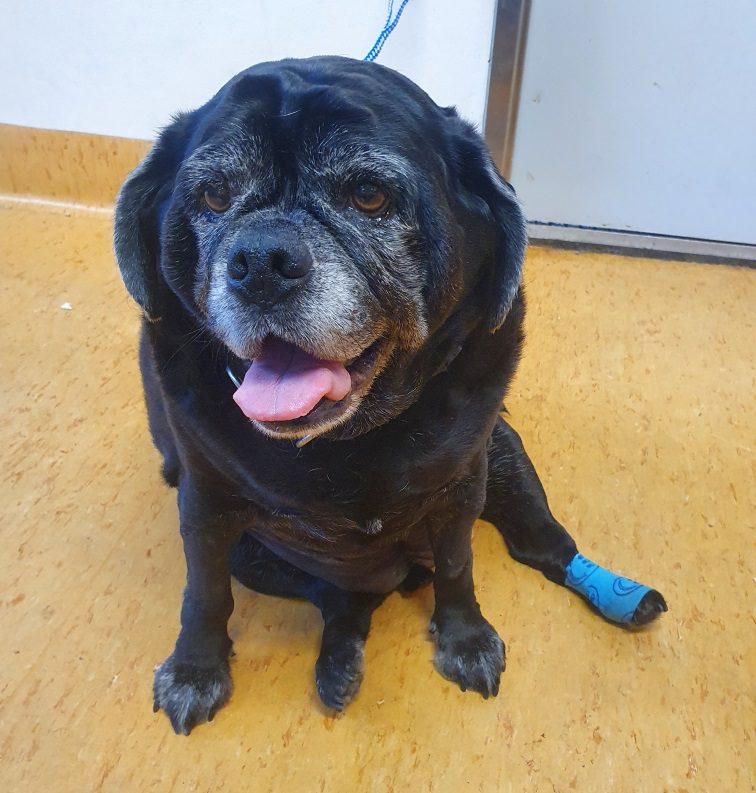Bleeding Splenic Tumour
Middle aged to elderly dogs can present with life-threatening abdominal bleeding. It is something we see quite regularly but it takes a skilled clinician and careful analysis, to work out what is happening.
Arthur is an 10 year old pug cross. At 32 kg you could describe him as a big boy.
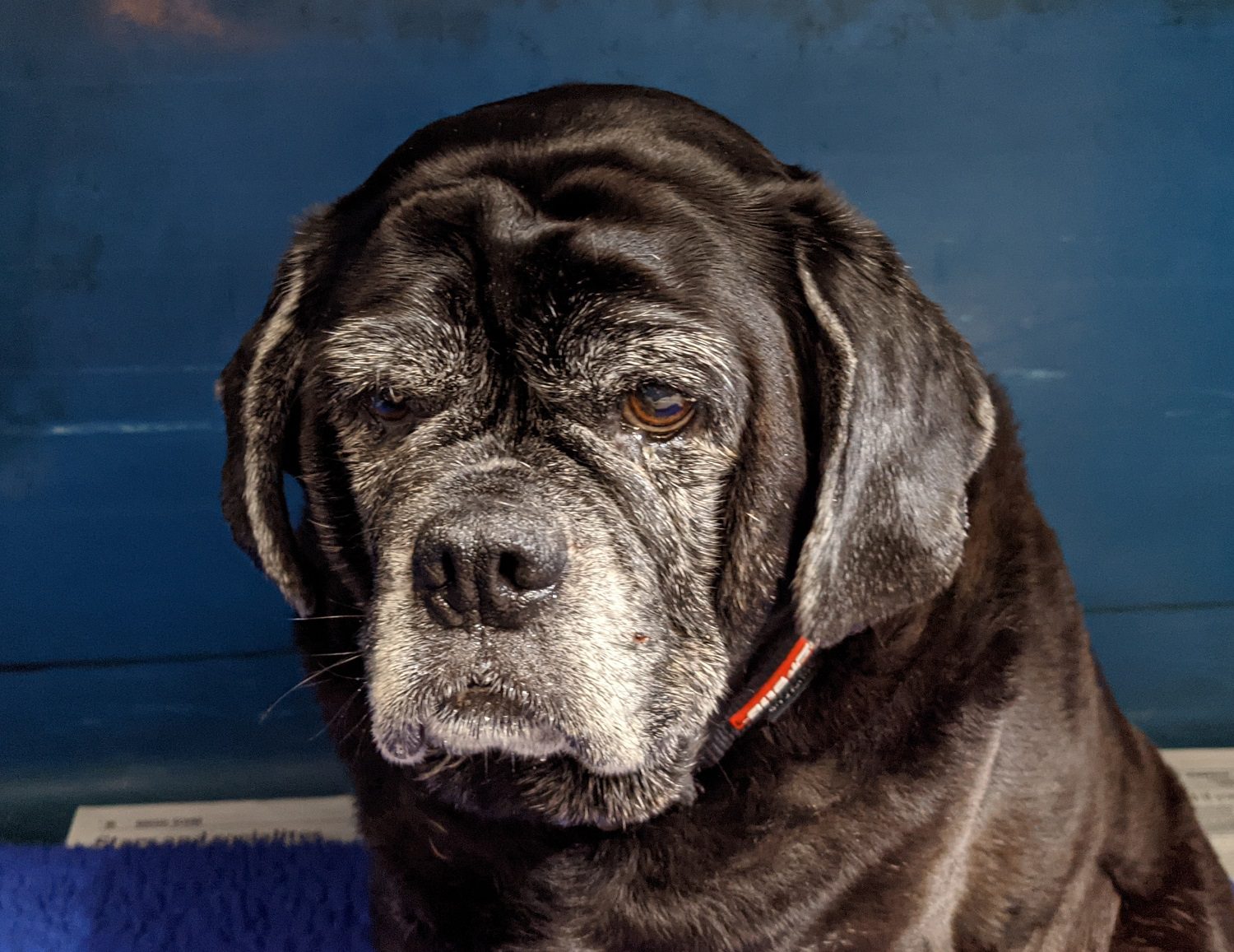
Presentation
Arthur presented after having a very lethargic day. He had been reluctant to walk into the garden. Arthur had had a milder episode, similar to this, a few weeks earlier. Dr Jill examined Arthur in our puppy yard (covid-style, staying outside with masks on). He was able to walk around but when examined he just flopped to the ground. This was very unlike Arthur.
Arthur is a very big boy. He has always struggled with his weight, but this day his abdomen seemed even bigger than usual. His gums seemed slightly pale, but is temperature was normal. Arthur’s condition was a real concern.
Laboratory Tests
Bloods were taken immediately. Although Arthur’s biochemistry was normal, his red blood cell level was slightly lower than usual. This made us concerned that he may have had an internal bleed.
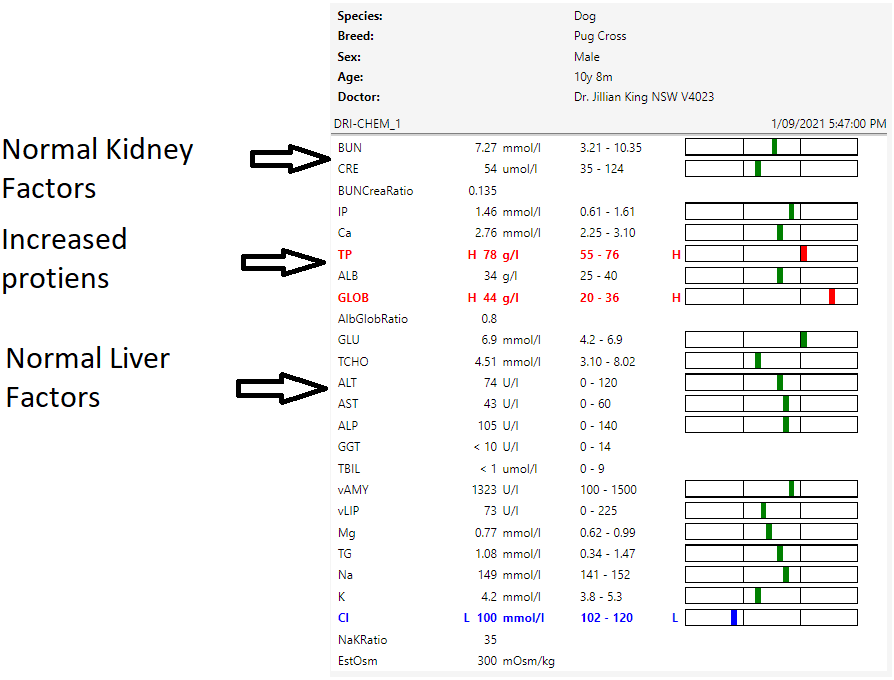
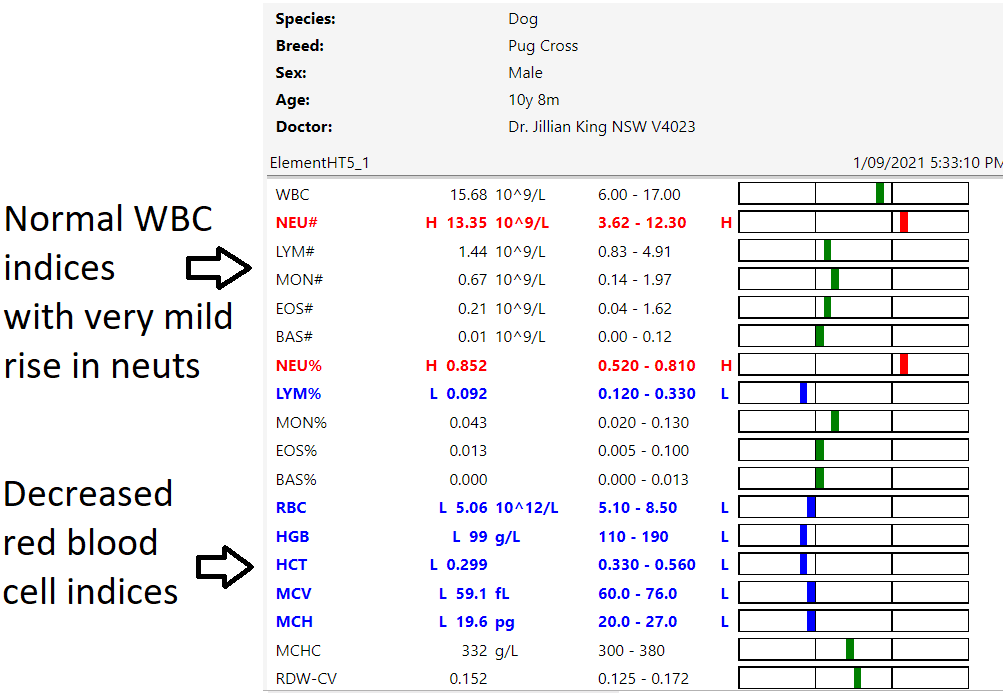
Imaging
Dr Jill and Dr Tanian performed a fast-scan ultrasound to see if there was any free-fluid in his abdomen. This could indicate a bleed. Scanning a very large abdomen can be challenging as the ultrasound machine has difficulties with depth.
A suspicious area of fluid and possible lesion were identified. Abdominal bleeding can be caused by benign nodules or cancerous lesions. To explore for an obvious cancerous lesion x-rays were taken of Arthur’s chest and abdomen. Arthur’s lung fields looked very normal but his abdominal x-ray had a suspicious area that may be an abdominal mass.
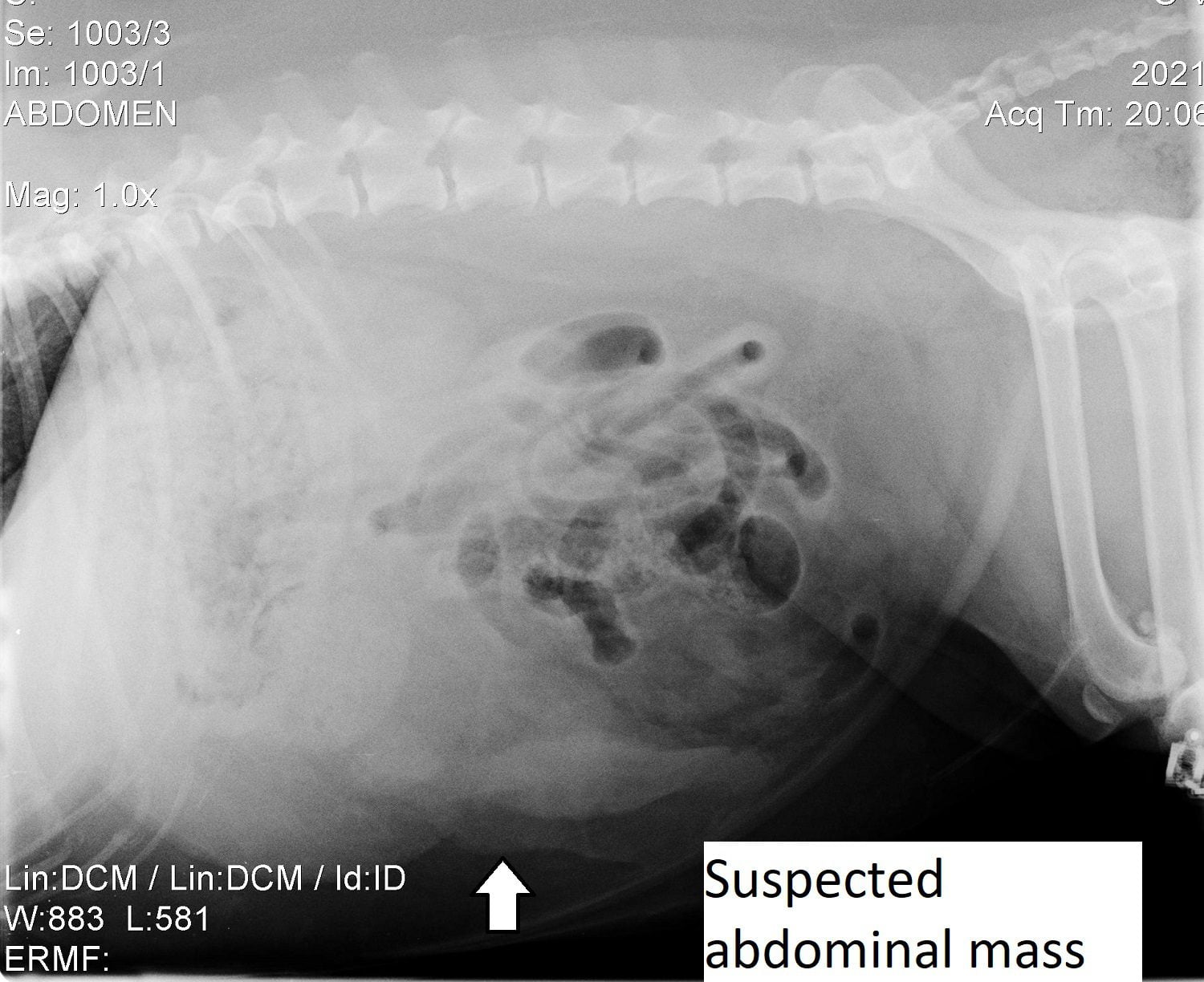
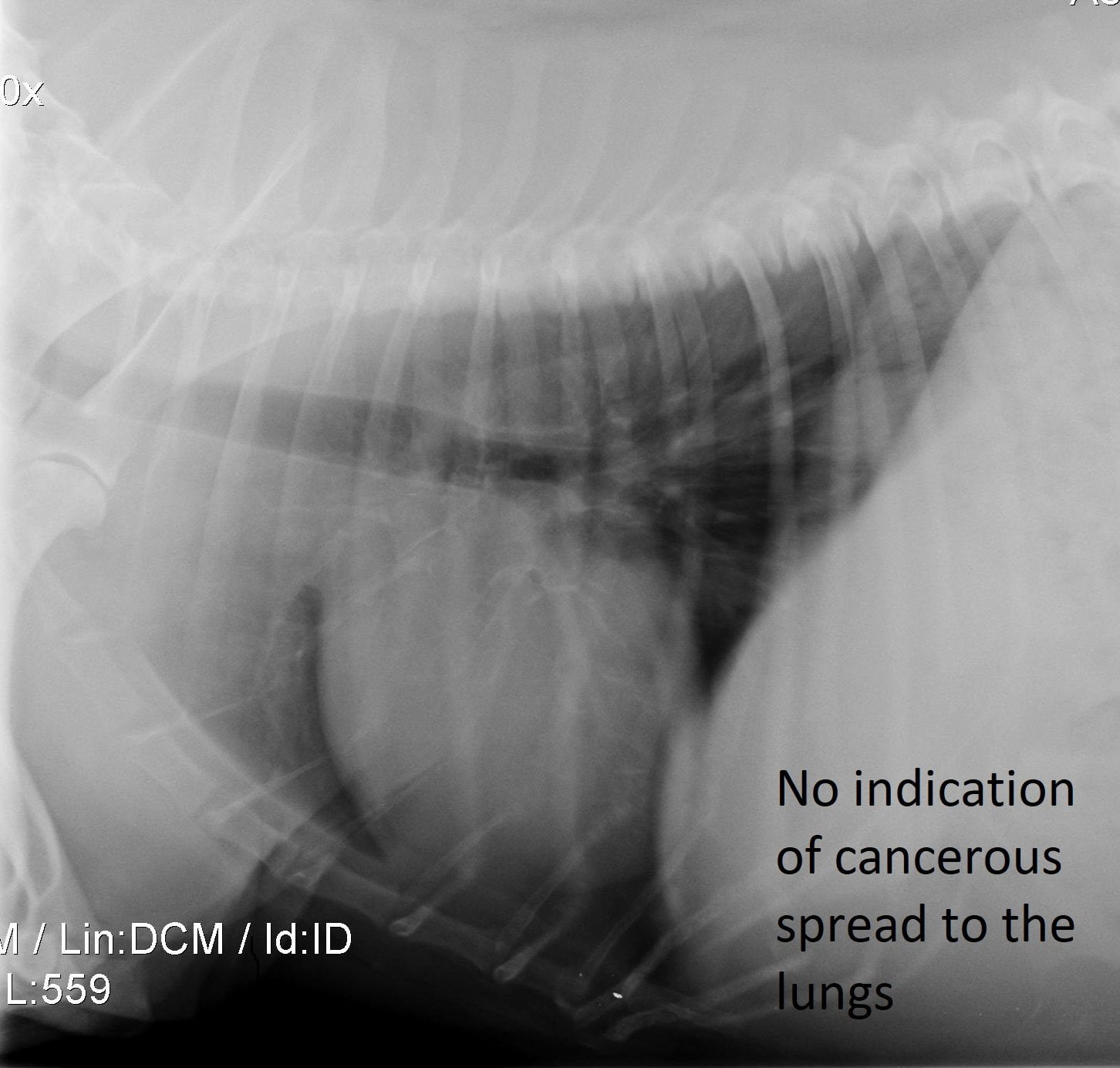
Care at the Emergency Service
Arthur had presented in the late afternoon. Fortunately, as members of the Emergency Service – NEVS, Pittwater Animal Hospital can transfer any unwell patients for care with no additional consulting charge. One of the very experienced NEVS vets, Dr Lucy was on duty. Lucy is an excellent critical care veterinarian and sonographer. Following ultrasonic examination, Dr Lucy was highly suspicious of a bleeding splenic tumour.
Splenic nodules are like time-bombs. A dog with a splenic nodule can have a sudden bleed and collapse needing immediate critical care, even a blood transfusion. Arthur was very stable, so his owner elected to delay surgery until Arthur could be returned to PAH the next morning. (As part of their service, NEVS will transfer any stable patient back to Pittwater Animal Hospital on weekday mornings.)
Surgery at Pittwater Animal Hospital
Arthur was transferred to PAH mid morning. He was prepared for surgery. His large swollen abdomen dramatically increased Arthur’s anaesthetic risk. At all times his chest needed to be kept raised so the weight in Arthur’s abdomen did not compromise his breathing. Once stably anaesthetized and prepared for surgery, Dr Jill opened up his abdomen. A large amount of fat was removed to help visualize the abdomen.
An 8cm nodule with evidence of previous bleeding was found in the spleen. The spleen was very carefully removed. This was a slow and careful procedure. With the extra abdominal fat, it was very challenging to identify and ligate all the splenic blood vessels.
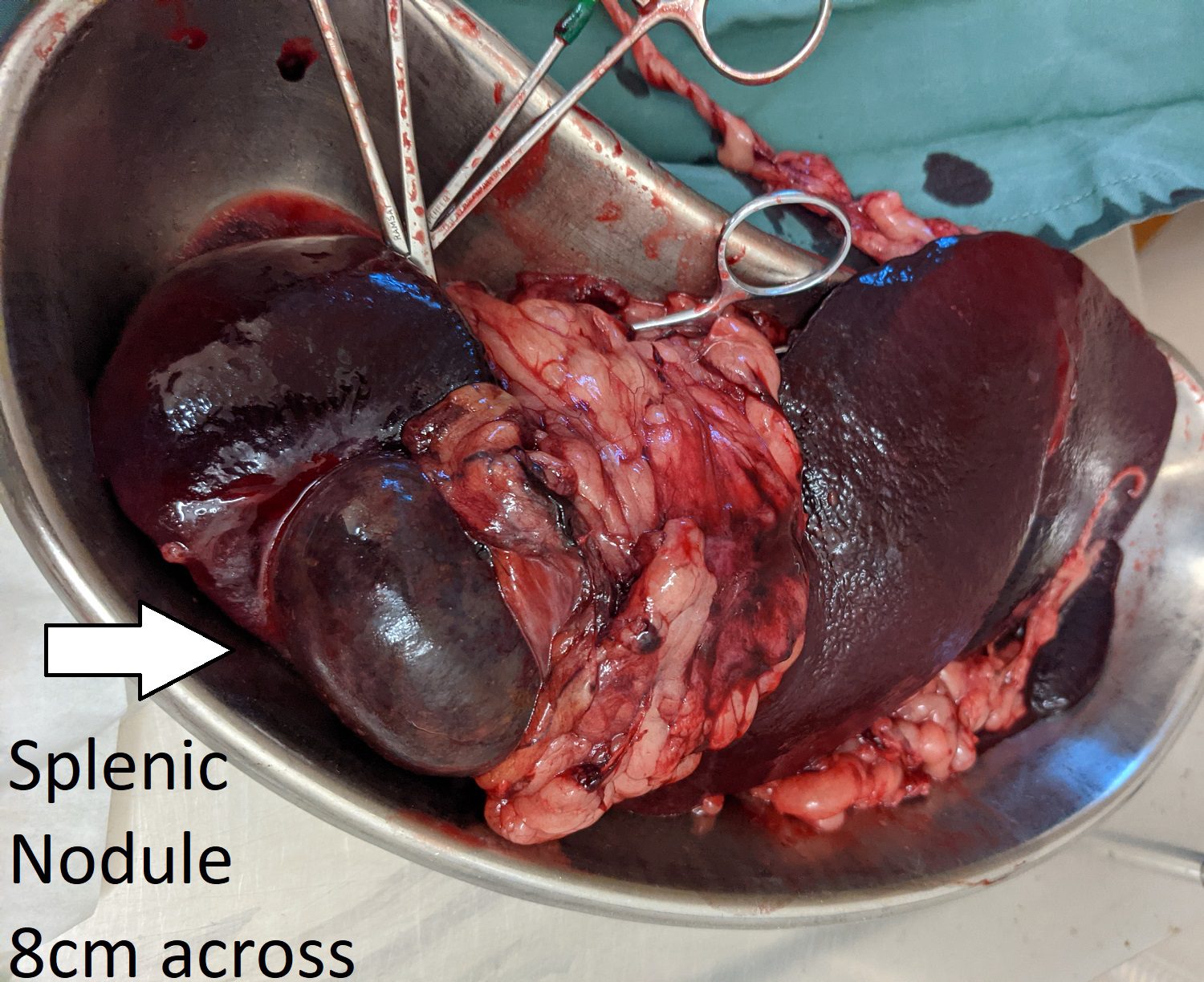
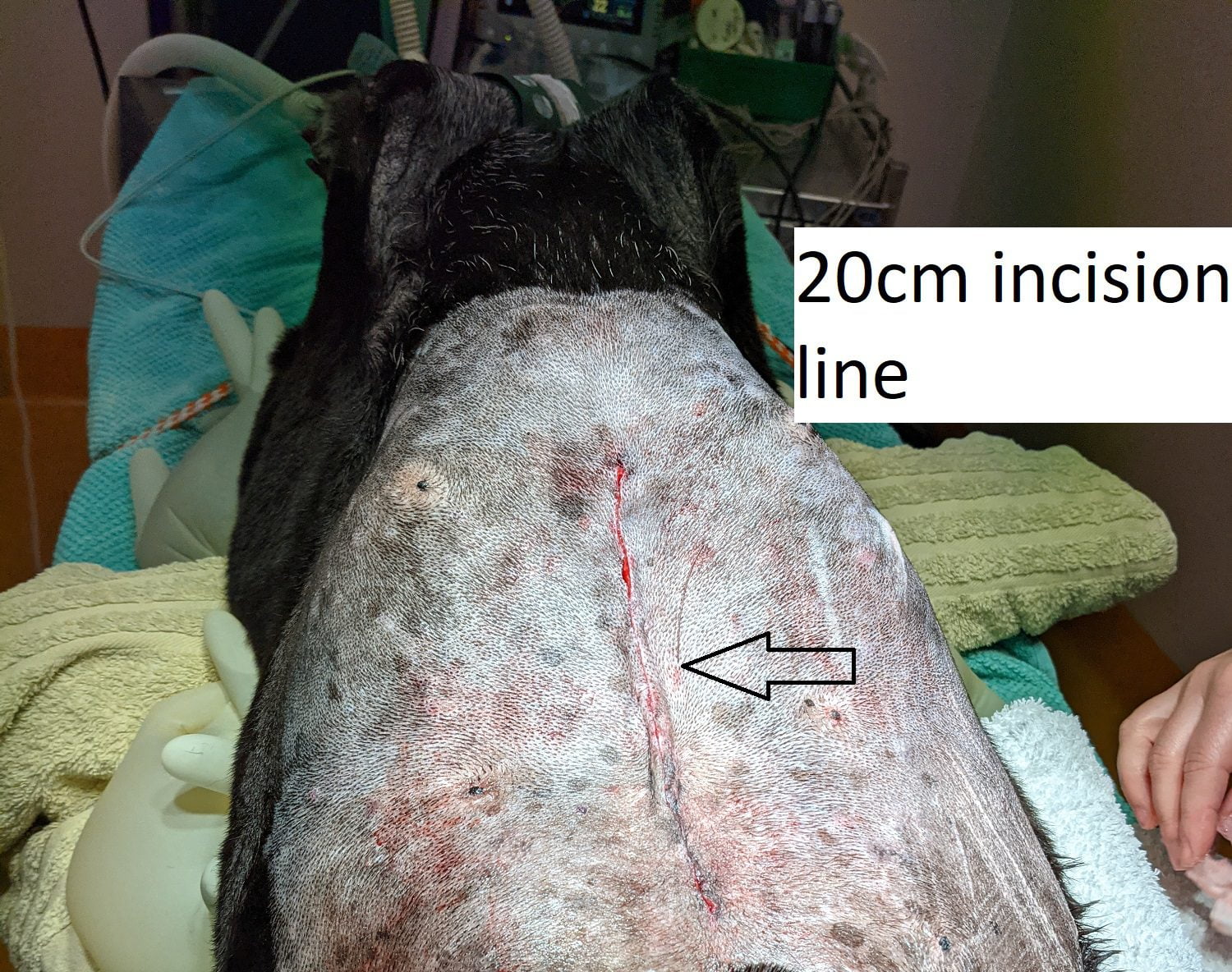
Arthur recovered very well from surgery and was able to walk out to the garden a few hours later. A further night in hospital on intravenous fluids, antibiotics and pain relief, and Arthur was ready to go home.
Home Time
The following day, Arthur was eating well and ready to go home on oral antibiotics and pain relief. His spleen was sent away for analysis. He would have to have a quiet week until he healed, but would gradually regain his strength.
Splenic Tumours
Splenic tumours are commonly found in middle aged and elderly dogs. Our preference is to detect these tumours before they have bled, so abdominal palpation is part of our routine examinations. Bleeding tumours can be a critical emergency needing extensive stabilisation, even blood transfusion. Once a dog has a bleeding tumour, urgent care is needed.
Some dogs will die from a bleeding splenic tumour before treatment is possible.
When a bleeding tumour is detected, it can be a very difficult decision to go to major surgery in elderly pets. More than half of these tumours may be cancerous, which means the cancer may return within 3-6 months. The difficult problem is that when a tumour is bleeding, if surgery is not performed, the pet will quickly deteriorate and suffer.
It is only after the tumour is sent to the laboratory that the long term likelihood of survival can be given.
We are crossing our fingers that everything goes well for Arthur. Fortunately, the decision to proceed to surgery was made easier for Arthur’s family as he was fully insured. Before Arthur had left hospital, the insurance company had already paid 80% of the veterinary cost through Gap-Only, leaving a much more manageable veterinary invoice.
